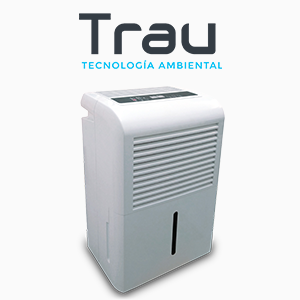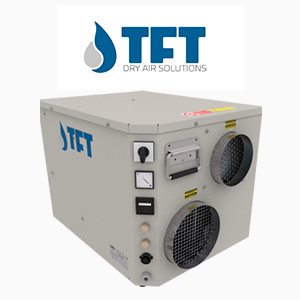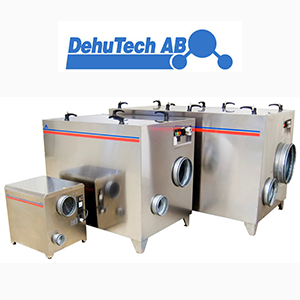Guide to dehumidification solutions: types of dehumidifiers and applications
Guide to dehumidification solutions: types of dehumidifiers and applications
Dehumidifiers are an effective solution to prevent problems caused by moisture in the air.
These devices help reduce humidity in the air and prevent humidity-related problems such as mold growth, equipment corrosion, and allergies.
In this article, we will explore the four main types of dehumidifiers, their advantages and disadvantages, and the recommended applications for each type.
Date: March 15 | ![]() Reading time: 6 minutes |
Reading time: 6 minutes | ![]() Share on LinkedIn
Share on LinkedIn
Dehumidifiers are an essential tool for maintaining adequate humidity in different environments, and selecting the right type of dehumidifier will depend on your specific needs and circumstances.
It is important to consider the size of the space to be dehumidified, the humidity level and ambient temperature, as well as maintenance and energy efficiency requirements, before making a choice.
Types of dehumidifiers
There are several types of dehumidifiers available on the market, and each has its own features, advantages and disadvantages. Below, we will describe the four main types of dehumidifiers:
Refrigerant dehumidifiers
Refrigerant dehumidifiers work similarly to air conditioning systems, using an evaporator and condenser to extract moisture from the air.
The humid air is sucked into the evaporator, where it cools and water vapor condenses. The water is then collected in a tank and the dry air is expelled into the environment.
Advantages
- They are energy efficient.
- They are easy to use and maintain.
- They are ideal for larger spaces.
Disadvantages
- They do not work well at low temperatures.
- They can generate noise.
Applications
- In homes and offices.
- In commercial spaces and stores.
Discover some of the ranges of refrigerant dehumidifiers available

TRAU DH755 - NR
portable dehumidifier
Extraction capacity of 50 L/24h
Air flow of 350 m3/h
Refrigerant R290
TRAU FD SERIES - POOL
Dehumidifier for ducted pools
Extraction capacity from 126 L/24h to 2050 L/24h
Air flow from 1400 m3/h to 20000 m3/h
Refrigerant R407c or R410a (depending on model)
TRAU DHCGH SERIES
Ducted Residential Dehumidifier
Extraction capacity from 34 L/24h to 150 L/24h
Air flow from 250 m3/h to 900 m3/h
Refrigerant R134 or R407c (depending on model)
Desiccant dehumidifiers
Desiccant dehumidifiers use absorbent materials, such as silica gel, to absorb moisture from the air.
The moist air is sucked into the desiccant, where the water vapor adheres to the absorbent material. The dry air is then expelled into the environment.
Advantages
- They work well at low temperatures
- They are silent
- They don't need a compressor, making them lighter and more portable.
Disadvantages
They are less energy efficient than refrigerant dehumidifiers
- They require more maintenance
Applications
In smaller areas, such as closets or bathrooms.
- In high humidity areas, such as indoor swimming pools or industrial spaces.
Discover some of the ranges of desiccant dehumidifiers available
Thermoelectric dehumidifiers
Thermoelectric dehumidifiers use thermoelectric technology to extract moisture from the air.
The humid air is sucked into a thermoelectric cooling module, where it is cooled and water vapor condenses. The water is then collected in a tank and the dry air is expelled into the environment.
Advantages
- They are silent and light.
They do not have a compressor, which makes them more energy efficient.
- They do not emit harmful gases.
Disadvantages
They are not as efficient as refrigerant dehumidifiers.
They do not work well in high humidity areas.
Applications
In smaller areas, such as caravans or single rooms.
- In environments where a low noise level is required, such as libraries or museums.
Adsorption dehumidifiers
Adsorption dehumidifiers use adsorbent materials, such as zeolite, to remove moisture from the air.
The moist air is sucked into the adsorbent material, where the water vapor adheres. The dry air is then expelled into the environment.
Advantages
They work well at low temperatures.
They are silent.
They do not have a compressor, which makes them more energy efficient.
Disadvantages
They are more expensive than other types of dehumidifiers.
They require more maintenance.
Applications
In areas where a low noise level is required, such as libraries or museums.
In industrial environments where a high dehumidification capacity is needed.



